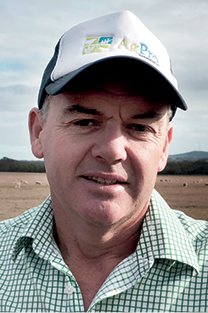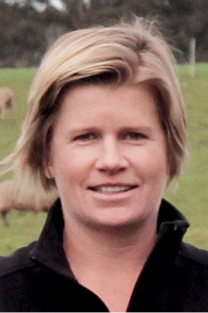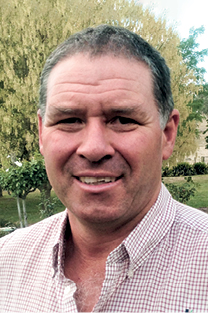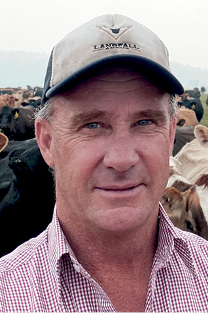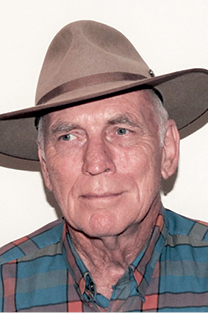Spring into action
14 April 2020
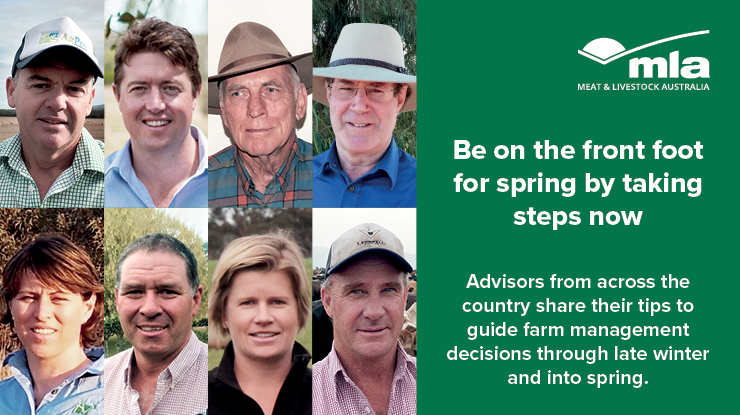
Be on the front foot for spring by taking steps now to prepare pastures and plan livestock activities. Here, advisors from all over the country share their tips to guide on farm management decisions through late winter and into spring.
Plan paddock management: What grazing or chemical options will optimise feed quality and extend the growing season? Rotational grazing (basic or intensive) improves pasture utilisation, composition and growth, and can delay seed set and prolong the green feed window. Spraying out low‑value capeweed, barley grass and other ‘space hogs’ will promote clover, which will increase growth rates of all livestock.
Take stock: Assessments to make in early spring should include:
- Ewe and lamb condition – will you wean late or early?
- Dry and cull ewes – should they be pulled out of paddocks and shorn to get weights up for sale and reduce grazing pressure?
- Weaners – do they require early‑imprint feeding?
- Water – what is the capacity of farm water through summer?
Target parasites: Spring conditions promote worms and flies, so integrated parasite management is vital. Use preventive maintenance, especially in mixed enterprises when response time can be delayed by other farming activities. If spring shapes up well, be mindful of body strike in Merinos and plan to get protection for late spring or early summer shearing.
Tools and resources
South Australia
Deb Scammell
Consultant, Talking Livestock, SA
Spring feed is often under‑utilised but, if it’s grazed effectively using appropriate stocking rates, producers can save extra feed for hay, to harvest or to finish extra stock.
Pasture springboard: Depending when you wean, spring feed can be used to get ewes and cows back into condition before re‑joining. This saves the expense of trying to increase condition score on decreased paddock feed over summer. The spring flush can also be used to optimise weaner weight gains.
Health check: Worm burdens reduce performance, so monitor worm egg count, especially if rotationally grazing weaner lambs. Be mindful of common nutritional issues such as:
- nitrate poisoning, red gut or bloat on lush lucerne and medic pastures
- grass tetany or reduced growth rates on cereals due to inadequate magnesium
- pulpy kidney – if stock have had a feed change before being moved onto lush spring feed, ensure they have had a minimum 3‑in‑1 booster vaccination.
Balanced diet: If required, provide roughage, grain and mineral supplement to balance paddock feed, avoid nutritional issues and mortality, and improve growth rates. Talk to an animal nutritionist, as appropriate supplementation can improve animal performance, often at a small cost.
Wise weaning: Develop a weaning program for lambs and set paddocks aside to wean into. Monitor weaner growth rates through spring so you can address any issues if they’re not hitting targets.
Tools and resources
- MLA Pasture Ruler
- Lifetime Ewe Management
- Gra$$ to Dollars: mla.com.au/pgs
Victoria
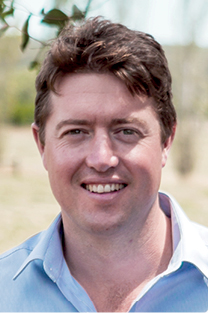
James Whale
Farm business and livestock consultant, Meridian Agriculture, south-west Victoria
If seasonal conditions continue to be favourable, a common situation facing producers in this region will be how to best use surplus feed. Many grazing businesses produce around two‑thirds of their annual grass production during the months of spring. There are many options available to use this growth and the variability between businesses in how well they capture the opportunity is enormous.
Take stock: The key decisions to be made at this time of year are:
- How should pasture quality and quantity be managed to optimise livestock performance?
- Should nitrogen fertiliser be used to increase pasture growth, animal performance or create surplus feed? If so, how much should be used and when?
- Can livestock trading or agistment be used to increase returns?
- How much conserved fodder needs to be produced this year?
Health check: Develop a spring animal health management plan which outlines management actions and critical dates to mitigate against the high productivity impact of common animal health issues such as internal parasites.
Forecast feed: Use pasture‑forecasting tools to develop management strategies to meet pasture targets and optimise livestock performance.
Work on your business: Business planning helps sharpen business focus. A good business plan incorporates a financial plan which lays the blueprint for planned business expenditure, investment, off‑farm needs and forecast financial performance. Revisit this plan at least once a year. Business planning is also an opportunity to check in on the needs and aspirations of individuals within the business and what the business is working towards.
Tools and resources
NSW
David Harbison
Principal advisor/agronomist, DR Agriculture, central-west NSW
A terrific autumn through central NSW followed three tough years. Many producers will have significant dry matter and not enough stock on hand to eat it, which creates the opportunity to give key paddocks an extended rest.
Pre‑spring clean: If you haven’t already, plan a ‘winter clean’ program in late July–August. Assess paddocks for desirable perennial and sub‑clover content. Determine which paddocks need an extended rest into spring to gain the most from rejuvenation.
Renovator’s delight: Plan now for which pasture paddocks May need full renovation in years to come. What actions are required in the next six to eight weeks to set those plans in place?
Be on the front foot: Fodder conservation is an opportunity to take advantage of surplus feed and restock hay sheds. Take action now to destock, fertilise and implement late broadleaf control to achieve the best dry matter yield and hay quality.
Weed alert: An explosion of broadleaf weeds, along with good sub‑clover emergence, will create a challenge to address broadleaf weeds. Monitor other species such as annual grass weeds, vulpia and barley grass which could cause problems in two to three months and plan future management now. It’s not just the usual suspects – be on the lookout for weed species introduced with purchased fodder. Monitor sacrifice paddocks (areas where hay, grain or silage was fed) and seek assistance if the weed identity is unknown.
Prioritise pastures: Keep younger stock and breeders on the best quality feed, while dry stock can be used to manage more mature feed. Be aware of the potential for bloat where there is good sub‑clover emergence.
Tools
- MLA Grazing EDGE course
- Pasture assessment courses: mla.com.au/pgs
- Soil testing laboratories
- Pasture winter clean: webinar
Tasmania
Basil Doonan
Principal consultant, Macquarie Franklin, Tasmania
Autumn was kind to Tasmanian producers. Many were able to finish additional animals or turn‑off stock at higher weights and are coming into spring with a strong cash position, good feed and good condition on animals.
Match maker: At this time of year, it’s challenging to marry feed supply with animal performance. Things move quickly and producers need to get the balance right, so keep an eye on animal condition and feed. Early weaning is always an option, regardless of the season, to optimise the productive and welfare outcomes for stock.
Budget savvy: Continuously monitoring feed budgets and cash flow budgets will determine the onset of spring and whether you need to buy supplement or accelerate purchasing stock.
Food for thought: Grazing rotation is a powerful tool and, when based on plant morphology, can result in 50% more feed. Consider temporarily speeding up grazing rotations to avoid pasture damage at this time of year. Assess feed quality (kilograms of dry matter per hectare) using visual assessment, pasture rulers or plate meters. Each method is a formal evaluation and preferable to bumbling along in the dark.
Early intervention: Use soil testing and feed budgets to determine fertiliser decisions for the season ahead. Make an early assessment if feed is below target, while there are more options. For example, if feed gaps are identified six to eight weeks in advance, you can use cheaper strategies such as nitrogen and gibberellic acid.
Be on the front foot: This time of the year tends to be operationally busy, so get as much planning done as possible in autumn and winter so you can focus on setting up for the season, including monitoring against budgets.
Tools and resources
Queensland
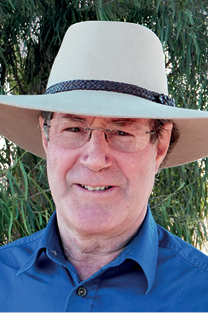 |
Col PatonDirector, EcoRich Grazing, southern Queensland |
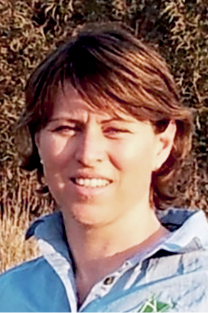 |
Jill AlexanderDirector, Applied Ag, southern Queensland
|
Conditions will be variable across northern Australia coming into spring. Some areas had good rainfall and exceptional pasture growth last summer, but the concentrated two‑month growing season meant pastures hayed off and went to seed quickly. Other areas had another failed season.
Turning point: This season will be a turning point for many pastures. Some subsoil moisture creates potential for a more typical or early start to the growing season and there’s plenty of seed ready to germinate. If producers can give this new seed time to germinate and establish before applying too much grazing pressure, there’s potential for land condition to improve.
Pasture recovery: It takes at least two good growing seasons to improve land condition, so plan resting strategies for paddocks hit by recent drought. In more intensive areas, consider sowing pastures in paddocks where land condition is very low and would be slow to recover. Plan forage options (such as forage sorghum) for summer to help reduce pressure on recovering paddocks. Start preparations for forage crops and sowing pastures now.
Kickstart growth: The initial growth rate of pastures will be restricted if nutrients tied up in organic matter grown last summer aren’t converted into a plant‑available form. Soil testing in early spring will determine if pastures will benefit from fertiliser to accelerate early growth in intensive, high‑production areas.
Take stock: A mid‑dry‑season forage budget in July–August will assess if feed will last until the next production point. Aim to retain at least 10–15cm of pasture stubble in the paddocks going into summer to accelerate the response to season‑breaking rain and ensure topsoil is retained.
Lighten the load: Aim to have stock numbers lowest in late spring and early summer. Allow stock numbers to increase naturally so extra stock are not outstripping pasture supplies during pasture recovery.
Rest up: Where possible, plan to rest, or at least reduce grazing pressure in paddocks early in the growing season until at least phase 2 of growth (bulk vegetative growth just before seeding) to allow last year’s seed to germinate and establish its root and shoot system.
Watch the forecast: If the La Niña forecast comes to fruition, it’s an opportunity to get paddocks ready to plant improved pasture. However, planting pastures is expensive and takes the paddock out of the grazing system for a year or two, so assess the financial implications and adjust stocking rate to the reduced grazing area.
Tools and resources
- MLA feed budget and rotation planner
- CliMate App or download from your app store
- BOM seasonal outlook video
- Pastures in marginal cropping lands
- Queensland Department of Agriculture and Fisheries pasture establishment workshops: contact Gavin Peck on 0428 783 771 or Stuart Buck on 0427 929 187
- MLA Grazing Land Management program: mla.com.au/edge
Northern Australia (Qld, NT and northern WA)
Geoff Niethe
Principal, Niethe Consultancies, northern Australia
In recognition of the different seasonal and management decisions facing producers in northern Australia, these tips are divided into three regions: south (south, south‑east and central Queensland), north (NT, northern WA and north Queensland) and all northern regions.
Northern Australia – south
Take stock: Assess feed going into summer and adjust stocking rate accordingly. Take into account the impact of winter rain, quantity and quality of ground cover as the bulk of calves will fall in August–October. Welcome spring rain if it falls but don’t rely on it to get through to summer.
Girl power: Develop a good heifer‑management plan. Aim for a six‑week calving window when replacement heifers join the main breeder herd by ensuring maiden heifers hit their critical mating weights at joining. Feed out protein meals to any heifers not on track to meet that target.
Genetic gains: Research potential sires before bull sales using BREEDPLAN to ensure purchases will maximise your genetic goals. If calving problems exist in maiden heifers, select bulls on their calving ease and low birth weight estimated breeding values to join with heifers.
Take control: If ticks are present, consider strategic treatment going into the storm season. Implement feral dog controls. Check fire breaks and conduct strategic burns.
Northern Australia – north
Condition counts: After the second‑round muster (August–October) condition score breeders and early wean any in body condition score of 2 or less. Wean all calves aged four months and older. Draft off breeders with small calves and provide non‑protein nitrogen supplementation to the most vulnerable breeders. Ensure replacement heifers are tracking well to meet critical mating weight and spike feed maiden heifers if pregnancy rates in first‑calf cows is a problem.
Health check: Vaccinate for botulism. Spay cull heifers before it gets too hot. Cull aged cows and any with broken mouths.
Know your pastures: Diagnosis of phosphorus deficiencies should have occurred at the end of the last wet. If necessary, get phosphorus supplement orders in well ahead of the wet season as this is the most important management strategy in deficient areas. Conduct faecal near‑infrared reflectance spectroscopy (FNIRS) to assess feed quality. Never graze perennial grasses down to the ground – always ensure stubble remains. Adjust stocking rates according to long‑term carrying capacity.
Sire management: Remove bulls if restricted joining practices are being used. Physically examine all herd bulls and cull those that are old, lame or have abnormalities of the reproductive tract. Establish clear breeding objectives so you can purchase the right sires for your business.
Fire up: Check fire breaks and conduct strategic burns to protect property from bushfire threats later in the fire season.
All northern regions
Be proactive: An ounce of prevention is worth a ton of cure. Revise your risk assessment for all endemic diseases, parasites and toxic plants and implement the appropriate control measures, such as effective herd health programs. While you’re at it, develop a drought plan based on rational
decisions. Set (and stick to) critical trigger points for pasture responses to ensure feed reserves are adequate to accommodate an extended dry period.
Tools and resources
- MLA phosphorus tips and tools
- BreedObject
- BREEDPLAN
- MLA Grazing Land Management program: mla.com.au/edge
- MLA feed budget and rotation planner

